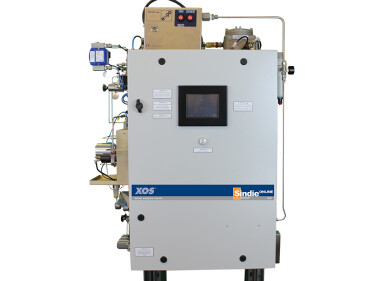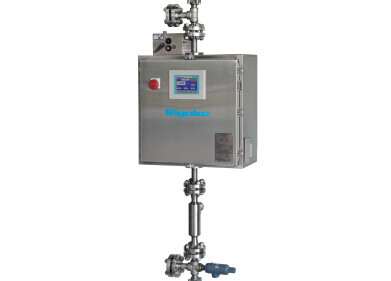Sulphur analysis
S6 JAGUAR - Control of Sulphur Reduction in Automotive Fuels with Compact, but Powerful WDXRF
Aug 10 2021
Sulphur in automotive fuels has been a source of toxic air pollutants like sulphur dioxide and sulfates. The international legislation enforces today very low residual sulphur concentrations in fuels, like the actual limit of 30 ppm for diesel in the US. The EU directive 2003/17/EC regulates the maximum allowed level in the European Union to be max. 10 ppm. Future regulations may drive these limits down even further. And more countries will join the sulphur reduction initiative.
Wavelength-dispersive X-ray fluorescence (WDXRF) analysis is actually the method of choice for accurately and precisely analysing low sulphur concentrations in petroleum products. WDXRF instruments are easily integrated into industrial workflows such as in refineries and commercial service laboratories due to its simple sample preparation, reliability, ease-of-use and accurate analytical results. At the same time, they offer compelling analytical performance making WDXRF far superior than other analytical methods. The ASTM Standard Test Method D2622 describes how to measure high, medium, low and ultra-low down to sub-ppm levels of S in different kind of fuels with WDXRF spectrometry using matrix-matched calibration for each material (oil, diesel, gasoline,…).
The WDXRF spectrometer S6 JAGUAR is equipped with Bruker’s 400 W HighSense™ X-ray tube. This makes the S6 JAGUAR the most powerful benchtop WDXRF unit on the market! Modern software with built-in audit-tracking and state-of-the-art hardware enables best-in-class analytical performance. The S6 JAGUAR achieves outstanding sensitivity for a wide range of elements (F to U) and the various configuration options allow us to optimise the system for your needs.
When using the S6 JAGUAR for gasoline analyses, you get the full power of a WDXRF system that fits in a benchtop unit. Especially when measuring only a few elements, the S6 JAGUAR is an excellent fit. In contrast to other methods like AAS (Atomic Absorption Spectroscopy), UV (Ultra-violet) and ICP-OES (Induced Coupled Plasma – Optical Elemental Spectroscopy), a simple one-time calibration makes the S6 JAGUAR ready for your application.
The S6 JAGUAR is an ideal choice for liquid sample analysis:
- Dedicated liquid cups for simple and rapid loading of liquid samples
- SampleCare™ technology, protecting critical system components for low maintenance
- (optional) Cup-in-cup technology for additional protection
- Intuitive software SPECTRA.ELEMENTS with “one button” solutions
- Sturdy design and robust, high quality components for long lifetime
- (optional) Ergonomic TouchControl™ display for operation without PC peripherals
Sample preparation
The calibration of low sulphur in mineral oil according to ASTM D 2622 was performed with seven standard samples prepared by using commercially available standards covering a concentration range from 0 – 100 ppm for the low range. All standards were traceable to the NIST reference sample. Seven grams of the standard or sample were pipetted into a liquid cell prepared with a 3.6 μm Mylar film support. The samples were measured directly after preparation.
Measurement
Measurements were performed on the S6 JAGUAR for ASTM D 2622 using the germanium crystal combined with the standard collimator. The S Ka signal was detected with the proportional flow counter. The excitation of this line was done with 27 kV and full 400 W power
Results
To test the analytical precision of the S6 JAGUAR one sample in the most important level of 10.2 ppm was measured 25 times one by one. The maximum allowed difference between two consecutive measurements was 0.93 ppm, but the typical difference of the S6 JAGUAR was much better, around 0.1 ppm. The LOD was 0.73 ppm. *please see image 3
The S6 JAGUAR has a wide range of capabilities, and this report demonstrates that it is reliable for analysis of S in fuels. The system easily fulfils the requirements for the WDXRF norm ASTM D 2622. The WDXRF spectrometer brings several advantages to your lab, esp. when compared to AAS and ICP-OES, including lower costs of operation and minimal calibration effort.
The S6 JAGUAR enables time-efficient and accurate analysis of sulfur in fuels & oils, contaminants, and wear metals in fuels, lubricating and engine oils. When installed at refineries and oil-production plants, it can easily test the quality of incoming materials and optimise the used additives from day one. It ensures that all elements in fuels are analyzed at best performance with highest accuracy and precision combined with low cost of ownership.
Digital Edition
PIN 26.1 Feb/Mar 2025
March 2025
Analytical Instrumentation - Elemental Analysis for Quality and Process Control at Refineries, for Lubricants and Wear Metals in Engine Oils - Synthetic Lubricants: New Developments - Scaling...
View all digital editions
Events
Apr 08 2025 Birmingham, UK
Apr 08 2025 Kielce, Poland
Apr 08 2025 Ravenna, Italy
Apr 08 2025 Southampton, UK
Apr 08 2025 London, UK
























